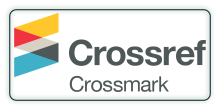THE EFFECT OF TECHNOLOGY COMMERCIALIZATION CAPABILITIES ON NEW PRODUCT DEVELOPMENT AND BUSINESS PERFORMANCE: THE MODERATING EFFECT OF BUSINESS REFERENCE
DOI:
https://doi.org/10.29121/ijetmr.v12.i4.2025.1538Keywords:
Technology Commercialization Capabilities, New Product Development, Business Performance, Fourth Industrial Revolution, Business Age ModerationAbstract
In the Fourth Industrial Revolution era, companies face unprecedented competition and market uncertainty, necessitating effective technology commercialization for survival. This study examines how technology commercialization capabilities influence new product development and business performance, particularly investigating business age as a moderating factor. The research analyzed data from 427 Fourth Industrial Revolution manufacturing companies using structural equation modeling, examining relationships between four technology commercialization capabilities (research, absorption, marketing, and manufacturing), new product development, and performance outcomes. Results demonstrated that research, absorption, and manufacturing capabilities significantly impact new product development, with manufacturing capability exhibiting the strongest influence. New product development showed positive effects on both financial and non-financial performance metrics. Notably, business age emerged as a crucial moderator in the relationship between technology commercialization capabilities and new product development. Companies with longer histories displayed stronger effects of research capabilities, while manufacturing and absorption capabilities proved effective regardless of organizational age. These findings enhance our understanding of how different technology commercialization capabilities contribute to business success across various organizational life stages, offering valuable insights for companies aiming to optimize their technology commercialization strategies in an increasingly competitive market environment.
Downloads
References
Augier, M., & Teece, D. J. (2007). Dynamic Capabilities and multinational Enterprise: Penrosean Insights and Omissions. Management International Review, 47 (2), 175-191. https://doi.org/10.1142/9789812834478_0004
Damanpour, F., & Evan, W. M. (1984). Organizational Innovation and Performance: The Problem of "Organizational Lag." Administrative Science Quarterly, 29 (3), performance: The problem of "organizational lag". Administrative Science Quarterly, 29(3),2
Economische en Sociale Geografie, 94(4), 453-462
Heo, S. Y., & Seol, S. S. (2005). Development of Technology Commercialization Performance Indicators for Technology-Innovative SMEs. Journal of Technology Innovation, 8 (1), 85-104.
IEEE Transactions on Engineering Management, 36(1), 3-10.
Jeon, I. O., & Ahn, W. S. (2016). A Study on the Impact of Technological Innovation Capability on Business Performance in Small and Medium-Sized Enterprises. Asia-Pacific Journal of Business Venturing and Entrepreneurship, 11 (2), 68-79.
Jung, G. I. (2019). A Meta-Analysis of Factors Affecting Technology Commercialization Performance. Journal of Technology Innovation Research, 27 (4), 1-33.
Lilien, G. L., & Yoon, E. (1989). Determinants of New Industrial Product Performance: A Strategic Reexamination of the Empirical Literature. IEEE Transactions on Engineering Management, 36 (1), 3-10.
Medium-sized Enterprises. Asia-Pacific Journal of Business Venturing and Entrepreneurship, 11(2), 68-79.
Rochford, L. (1991). Generating and Screening New Product Ideas. Industrial Marketing Management, 20 (4), 287-296. https://doi.org/10.1016/0019-8501(91)90003-X
SMEs. Journal of Technology Innovation, 8(1), 85-104.
Swamidass, P. M., & Newell, W. T. (1987). Manufacturing Strategy, Environmental Uncertainty and Performance: A Path Analytic Model. Management Science, 33 (4), 509-524. https://doi.org/10.1287/mnsc.33.4.509
Van der Panne, G., & Dolfsma, W. (2003). The Odd Role of Proximity in Knowledge Relations: High-Tech in the Netherlands. Tijdschrift Voor Economische en Sociale Geografie, 94 (4), 453-462. https://doi.org/10.1111/1467-9663.00273
Zirger, B. J., & Maidique, M. A. (1990). A Model of New Product Development: An Empirical Test. Management Science, 36 (7), 867-883. https://doi.org/10.1287/mnsc.36.7.867
Published
How to Cite
Issue
Section
License
Copyright (c) 2025 Ha Chang Su, Oh Jaesin

This work is licensed under a Creative Commons Attribution 4.0 International License.
License and Copyright Agreement
In submitting the manuscript to the journal, the authors certify that:
- They are authorized by their co-authors to enter into these arrangements.
- The work described has not been formally published before, except in the form of an abstract or as part of a published lecture, review, thesis, or overlay journal.
- That it is not under consideration for publication elsewhere.
- That its release has been approved by all the author(s) and by the responsible authorities – tacitly or explicitly – of the institutes where the work has been carried out.
- They secure the right to reproduce any material that has already been published or copyrighted elsewhere.
- They agree to the following license and copyright agreement.
Copyright
Authors who publish with International Journal of Engineering Technologies and Management Research agree to the following terms:
- Authors retain copyright and grant the journal right of first publication with the work simultaneously licensed under a Creative Commons Attribution License (CC BY-SA 4.0) that allows others to share the work with an acknowledgment of the work's authorship and initial publication in this journal.
- Authors can enter into separate, additional contractual arrangements for the non-exclusive distribution of the journal's published version of the work (e.g., post it to an institutional repository or edit it in a book), with an acknowledgment of its initial publication in this journal.
- Authors are permitted and encouraged to post their work online (e.g., in institutional repositories or on their website) before and during the submission process, as it can lead to productive exchanges, as well as earlier and greater citation of published work.
For More info, please visit CopyRight Section






























